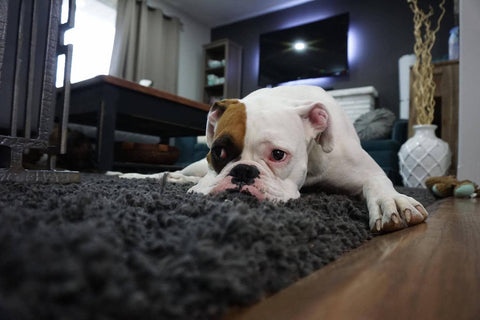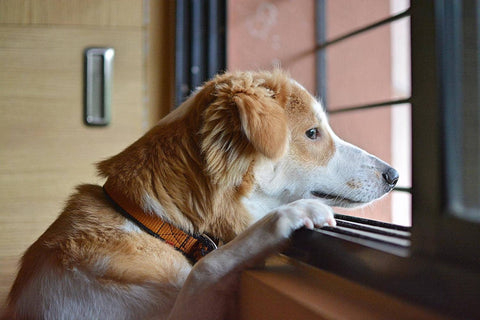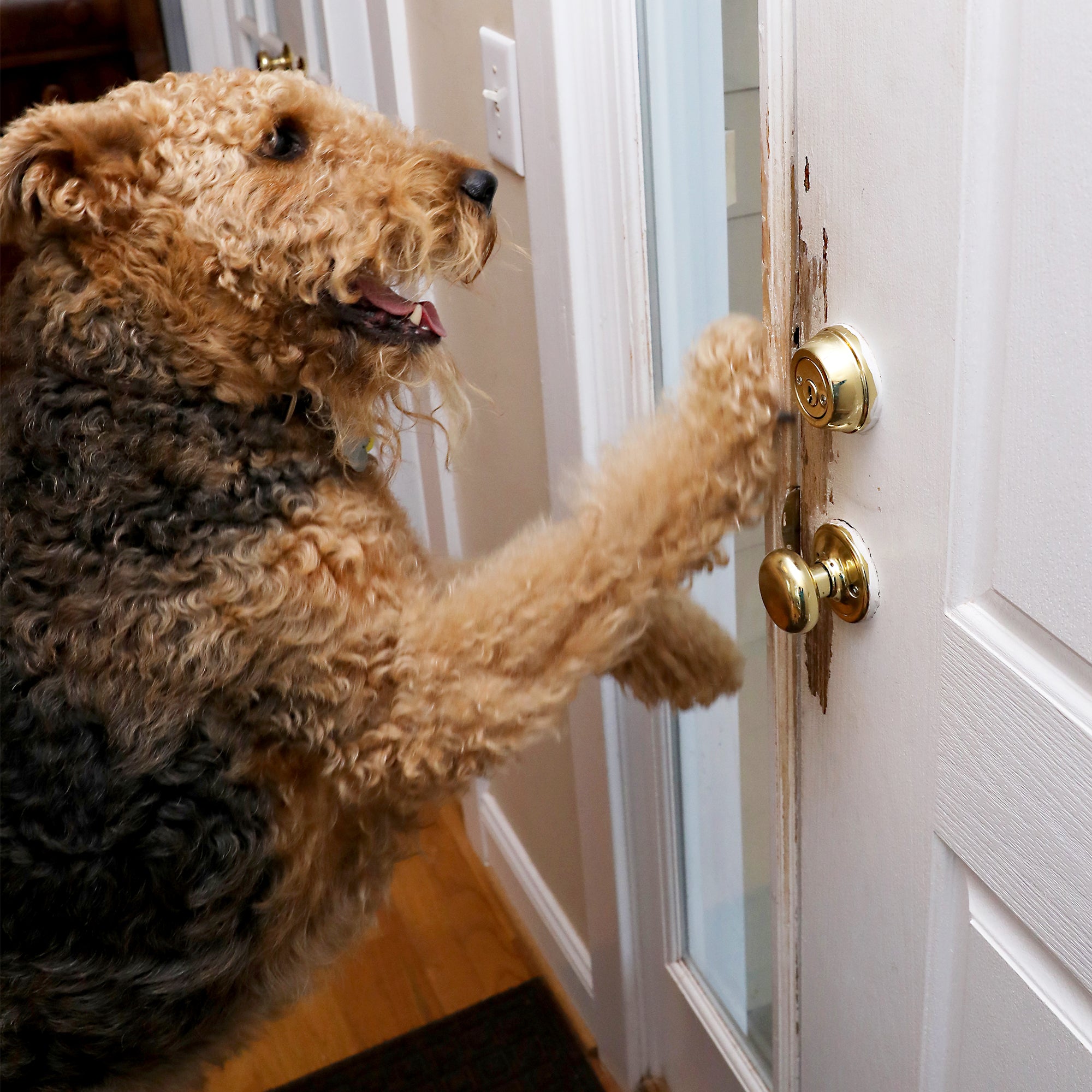The following provides 9 tell-tale signs of dog anxiety (or separation anxiety), along with 6 ways to help your furry friend cope and overcome it when left home alone while also protecting your home from anxiety-driven scratching and other damage they can unwittingly inflict upon our poor doors and cherished items.
Not again! You’ve come home from a day at work or a few hours of running errands and your dog has dumped the trash can, gnawed on the window sill and is clawing the door again. Why!!!?
This could be a sign of dog anxiety, or more specifically, separation anxiety.

Take a deep breath. We know it’s not easy to realize that our dogs don’t destroy the house because they’re being bad. Dogs destroy the house because they are anxious and that anxiety manifests itself in destructive behaviors.
If your dog has only recently begun acting out and causing home destruction you will want to:
- Ask your veterinarian for advice
- Ask yourself if anything in your home environment has changed. Have you added a new pet, lost a pet, brought home a new baby, moved or had any other change in routine.

 A change in your routine that upsets your dog’s routine, especially if he was accustomed to you being home all day and now all of a sudden you are leaving the house for hours at a time and leaving him home alone can lead to heightened anxiety in your dog.
A change in your routine that upsets your dog’s routine, especially if he was accustomed to you being home all day and now all of a sudden you are leaving the house for hours at a time and leaving him home alone can lead to heightened anxiety in your dog.
9 Tell-Tale Signs of Dog Anxiety
Here are signs of anxiety you should pay attention to:
- Unusual or prolonged barking. This is especially true if you had a dog who wasn’t always that vocal.
- Licking or chewing himself.
- Acting frantic when you come home. Yes, our dogs are enthusiastic to see us when we come back home, but if your dog is over the top and if her behavior has changed, you will recognize the difference.
- Not eating and loss of appetite.
- Sleeping more than usual.
- Being a “Velcro dog” meaning he will not leave your side or let you out of his sight when you’re home.
- Resource guarding you when you’re home. A dog who is anxiety prone will have behaviors that are out of the ordinary and if your dog doesn’t allow other pets or people near you -- he is resource guarding you -- and that could be a sign of anxiety.
- Going to the bathroom in the house. If your dog has been fully house-trained and is now going to the bathroom in the house, it could be anxiety-fueled.
- Destroying the house. If he is scratching the doors or walls, chewing the furniture or the window sills or otherwise causing destruction she could be doing this because she is anxious when you’re away.

How to Help Your Dog Overcome Anxiety
To regain control of your home and to help your dog relax you will want to take steps to alleviate his anxiety. Keep in mind this may not be an overnight solution.
Be patient.
- Talk with your veterinarian if you notice behaviors that are out of the ordinary for your dog. Your veterinarian will be able to rule out any potential health issues that are causing the change in your dog’s behavior.
- Develop new routines. If you determine a change in routine is causing this stress in your dog, work on new routines. Get him accustomed to the new way of life and work with him on the new routine until he is less anxious.
- Tire her out. You may need to change your routine and make time to give your dog a long walk or an exercise session to tire her out before you leave her alone. A tired dog is a dog who is less prone to destructive behaviors.
- Food puzzles and mental stimulation. Give your dog a food puzzle to solve while you’re away. He will solve the puzzle and be rewarded by treats. A Kong-type toy filled with peanut butter and pieces of kibble, then frozen will give your dog a long-lasting treat that might keep him out of trouble.
- Turn on the television or radio to keep your dog entertained and to keep him company. If your house is usually not totally silent, and when you’re away it is that can make your dog anxious. A program like DOGTV is ideal to keep your pup comfortable and relaxed while you’re away.
- Hire a dog walker or pet sitter. You may want to hire a professional or ask a friend or family member to come and visit your dog during the day or take her for a walk.

Protecting Your Home and Dog
Our dogs are creatures of habit and when their routines are interrupted, they tend to act out in the only way they can, barking and destroying the house.
If you find your dog is anxious or has separation anxiety, protect your doors and furniture with our pet scratch protection products. You can protect your house, but more importantly you protect your dog from injuring himself when he’s scratching the door.
CLAWGUARD builds shields that help protect homes from damage caused by dogs and cats. Products include door shields, couch guards, and universal protective tape that protects commonly scratched areas like window sills, furniture, banisters, weatherstripping and more. Check us out on Amazon and read our many FIVE STAR reviews!
